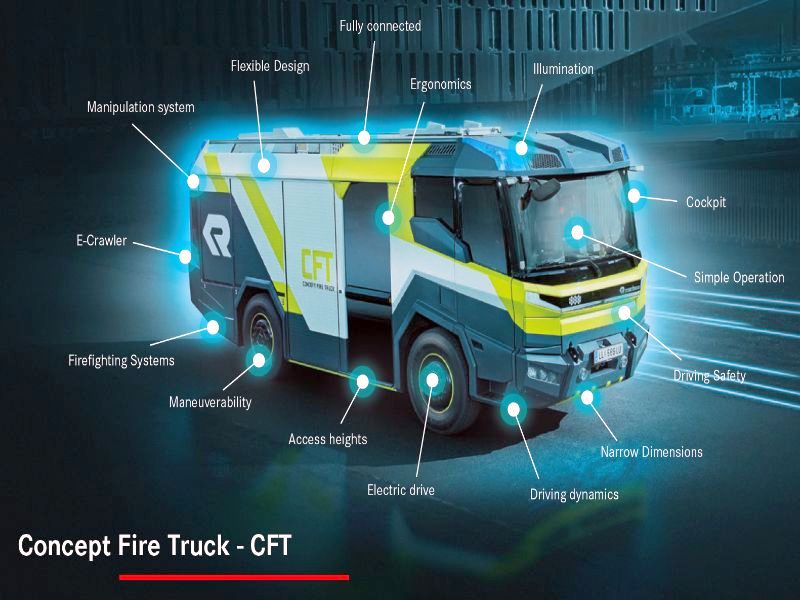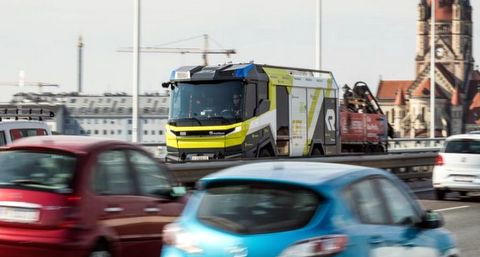Another niche filled by an electric version
Electric cars, trucks and buses are slowly making their way onto roads. There have been more than 7.2 million electric vehicle sales to date. As technology advances, there will be even more. Hybrid and fully electric vehicles are already available for a variety of commercial and personal uses. However, it wasn’t until recently that innovators began to apply electric technology to emergency vehicles. Now, the Los Angeles Fire Department (LAFD) is showing off North America’s first electric fire engine from Austria-based Rosenbauer Group.
Making history
The “Revolutionary Technology” (RT) concept fire truck first became a reality last year, when the LAFD purchased the truck for $1.2 million. Now, the fully networked engine is touring the country and boasting innovative safety features, excellent driving dynamics and superior maneuverability. However, the vehicle isn’t fully electric. It’s a series plug-in hybrid like the Chevrolet Volt. Volvo Penta, which has created electric powertrains for a variety of applications, will power the Revolutionary Technology fire truck. The electric drive unit is based on one use in terminal tractors. To test durability, Rosenbauer will also test three more trucks in Berlin, Amsterdam and Dubai. The company indicated the unit will begin serial production as early as next year. The truck features two electric motors with a total output of 490 horsepower and off-the-chart torque. As with most electric vehicles, it offers a low center of gravity for great cornering stability. An additional option is an integrated drone that could be used to scope out the situation out of sight of a fire.
How do electric engines compare?
Are electric fire trucks any better than traditional engines, though? In terms of power, gas- or diesel-powered engines win every time. The truck is loaded with technology However, electric trucks are quieter, which allows the fire rescue team to communicate clearly and effectively at the emergency scene. Because the electric drive train ensures little fuel combusts while driving, the RT also reduces emissions, making it an eco-friendly alternative to traditional diesel trucks. Like traditional fire engines, electric trucks are pumper tankers that can provide relief during fires. However, they also feature a connected mobile command unit, an adjustable ride height and built-in quick-charge batteries with a charging capacity of 100 to 150 kilowatts. A range extender allows the RT to extend its electrical driving range, so it is not limited to its all-electric range.
The future of electric emergency vehicles
It may be a few years before a full fleet of electric fire trucks makes its way to the U.S. In the meantime, you may see other electric emergency vehicles on the road, like the new zero-emission Nissan ambulance. This vehicle relies on two lithium-ion battery packs and can even act as a mobile power source during power outages and natural disasters. Various other companies are currently designing and developing fleets of fully electric emergency vehicles, including golf carts for police and ATVs for search-and-rescue operations. However, many of these vehicles must undergo dozens of tests and simulations before they’re road-ready.
A Slow but Sure Transition
Fewer than one percent of the 250 million vehicles on America’s roads are electric. However, as automakers shift to producing electric cars, trucks and SUVs, electric vehicles could account for 25 percent of new sales by 2035 by some estimates. That’s the point California and other states are mandating all new light-duty vehicles for sale must produce zero tailpipe emissions (ZEVs). The state also mandated that, where feasible, all heavy-duty on-road and off-road vehicles also should be ZEVs. Still, slow fleet turnover means most vehicles on the road will run on gasoline and diesel for decades to come. Do EVs excite your electrons? Do ebikes get your wheels spinning? Do self-driving cars get you all charged up? Then you need the weekly SHIFT newsletter in your life. Click here to sign up.


